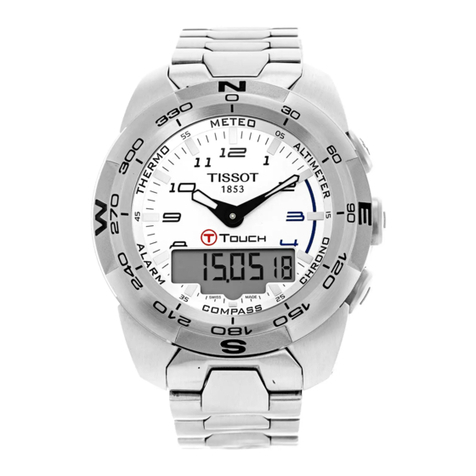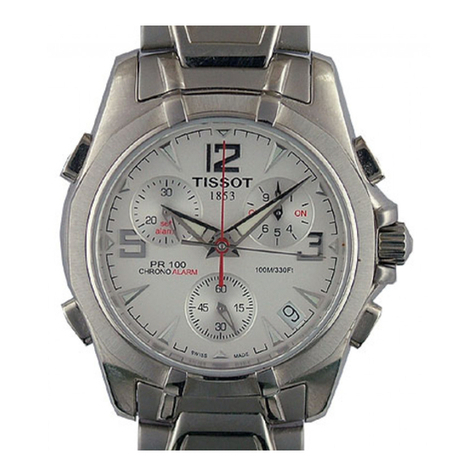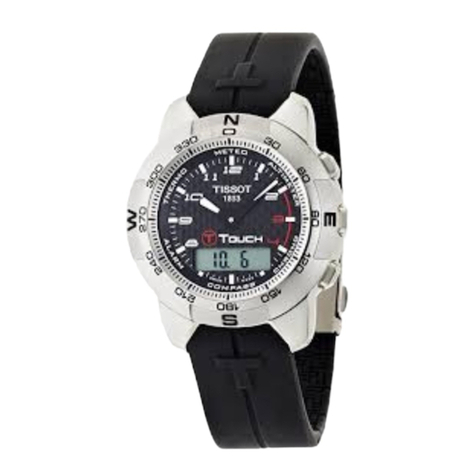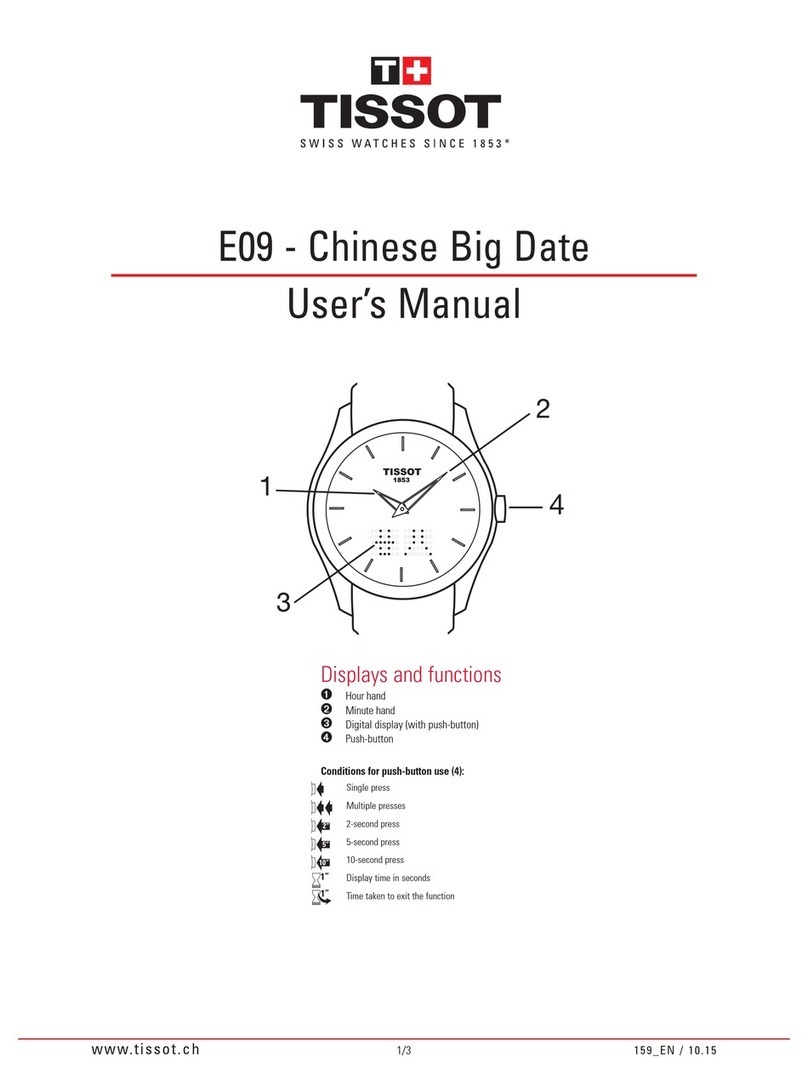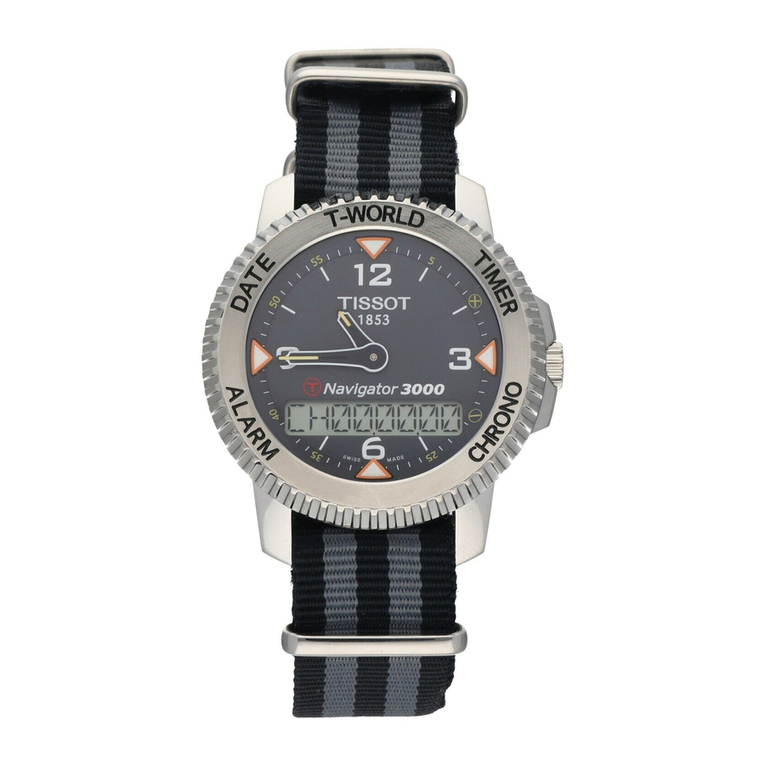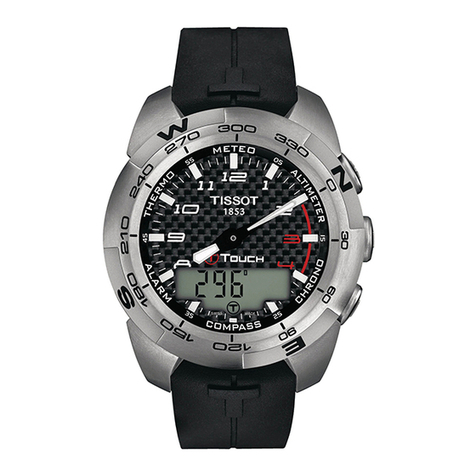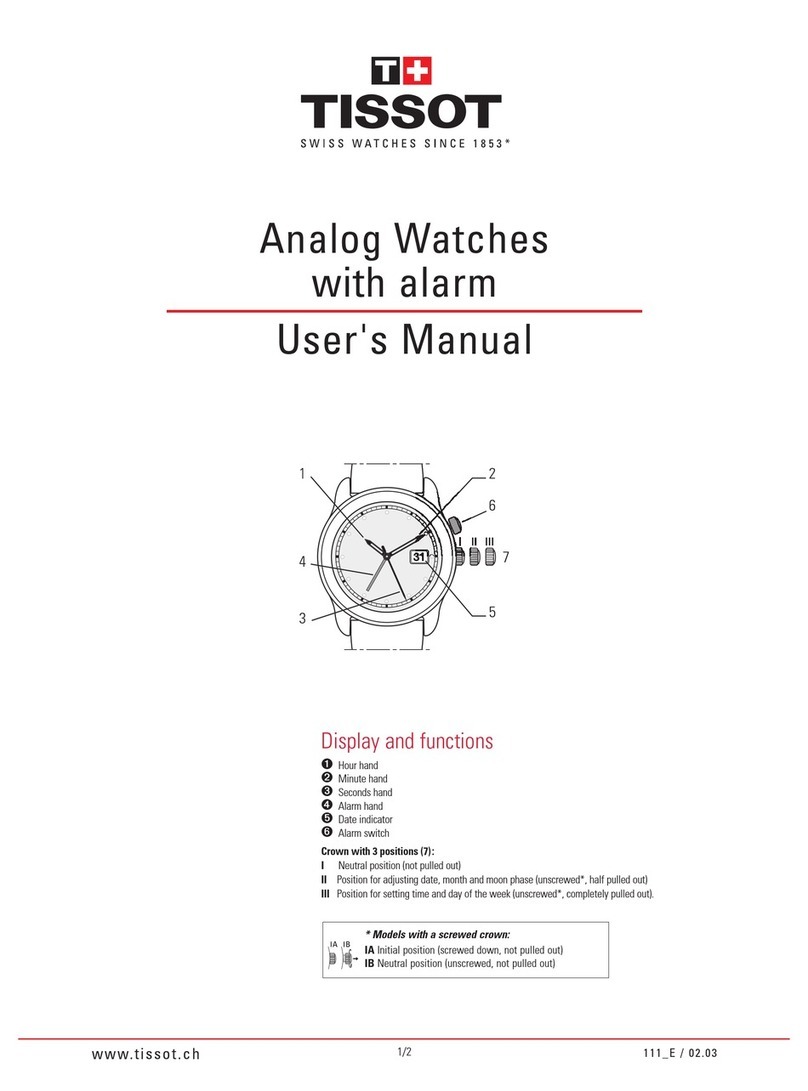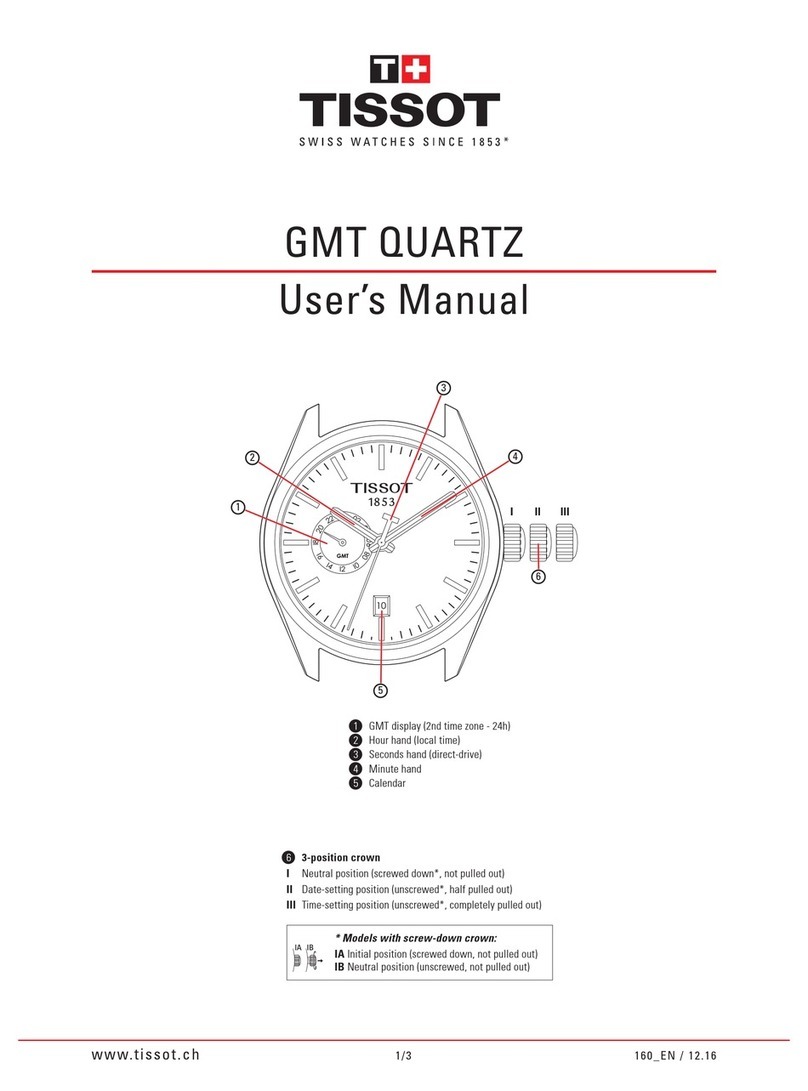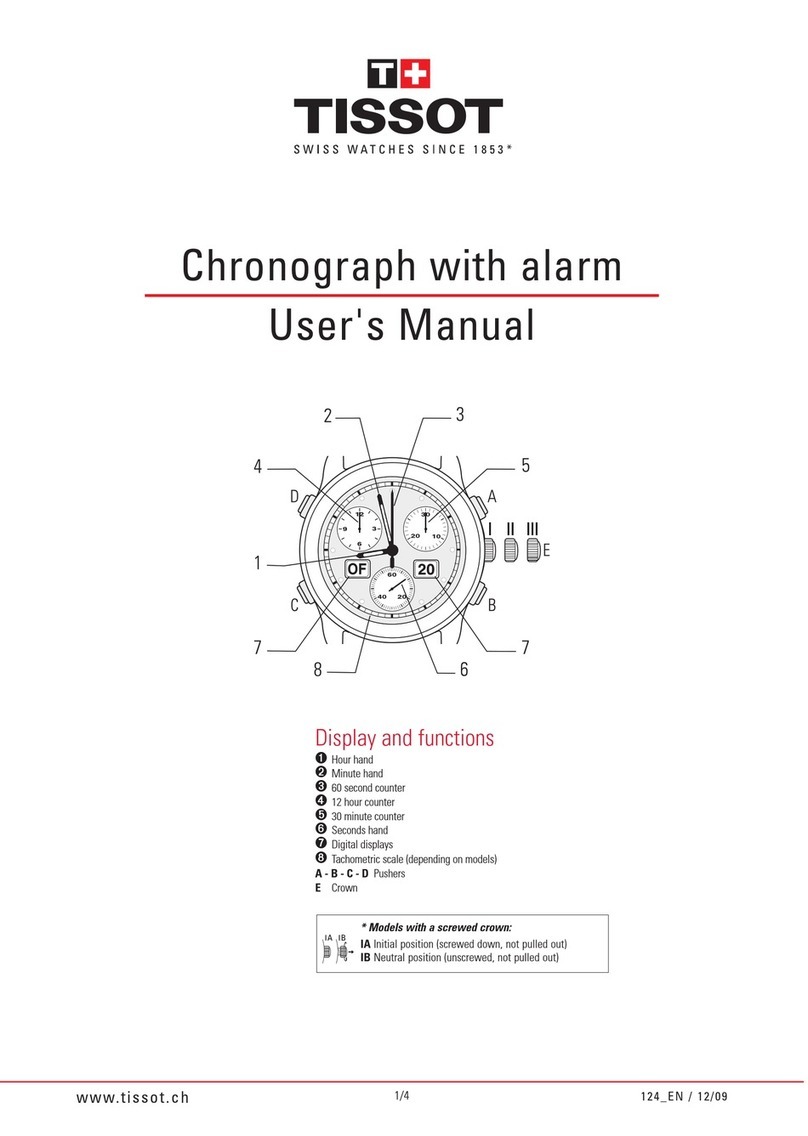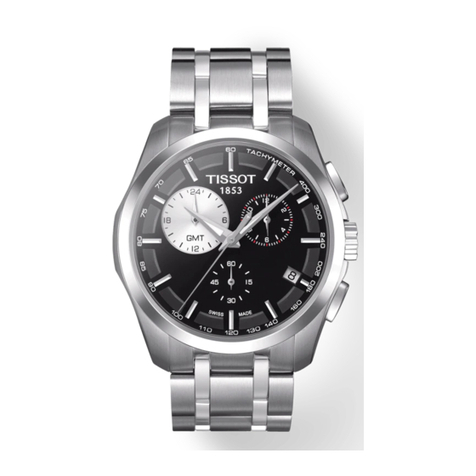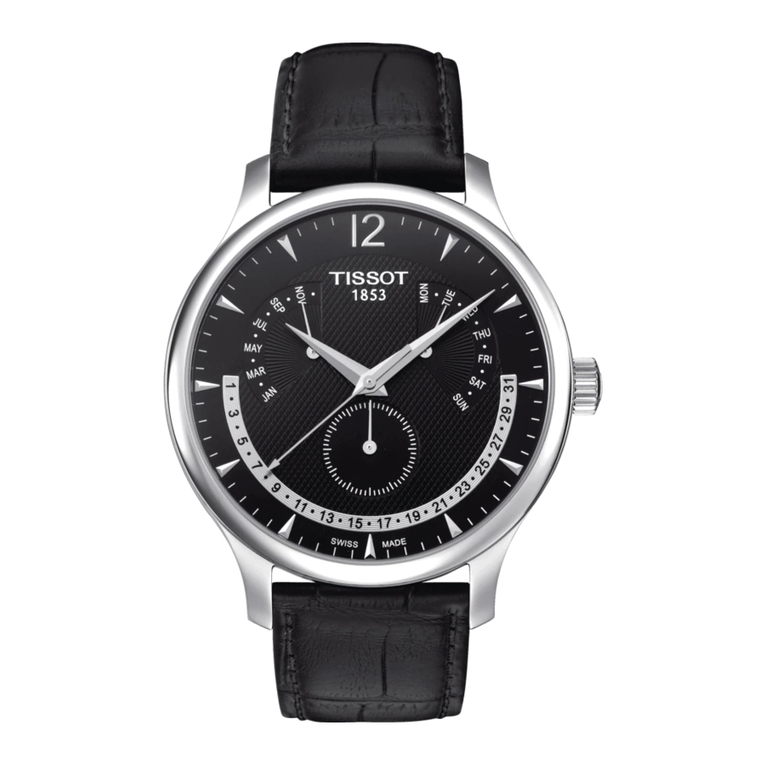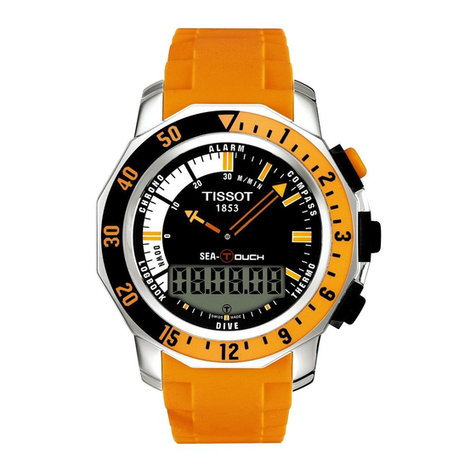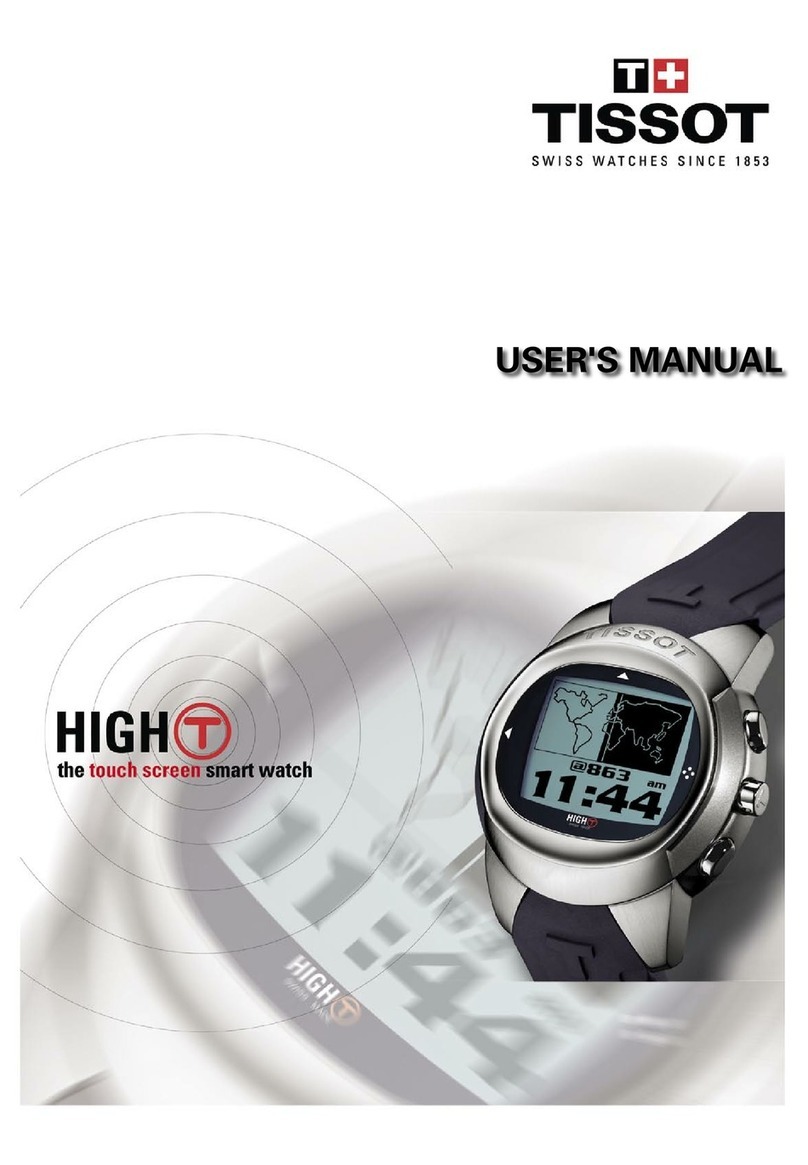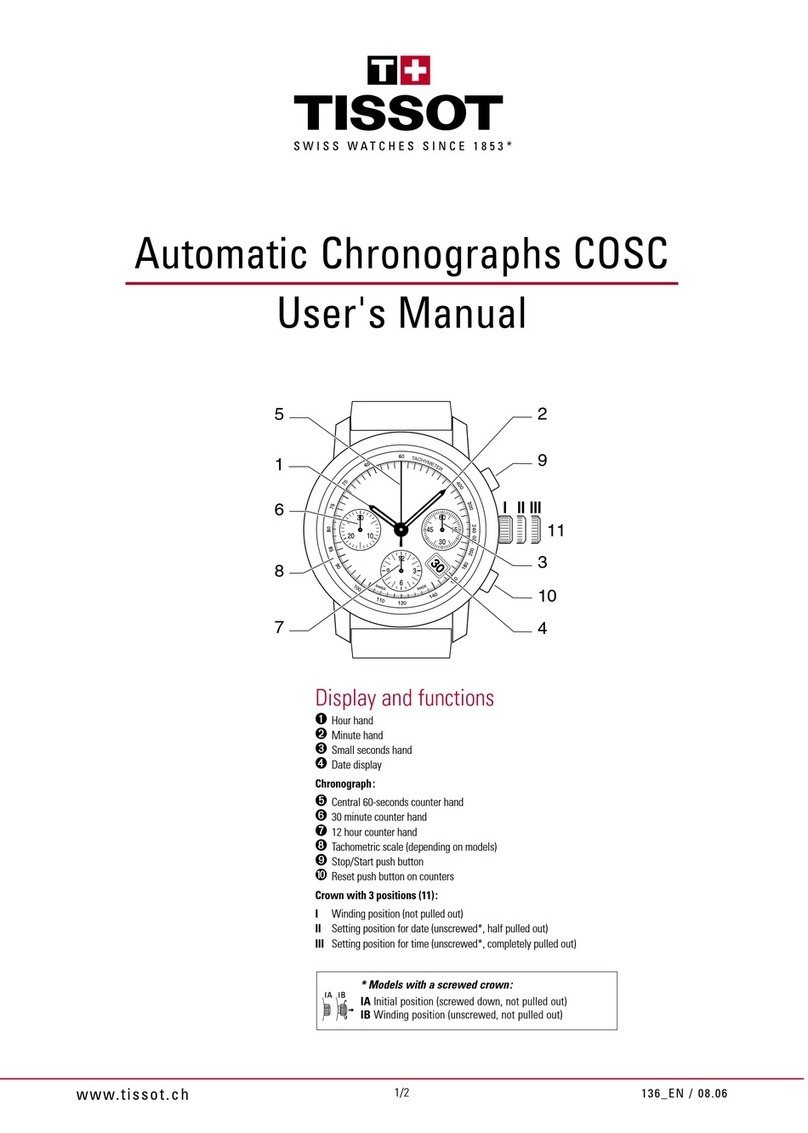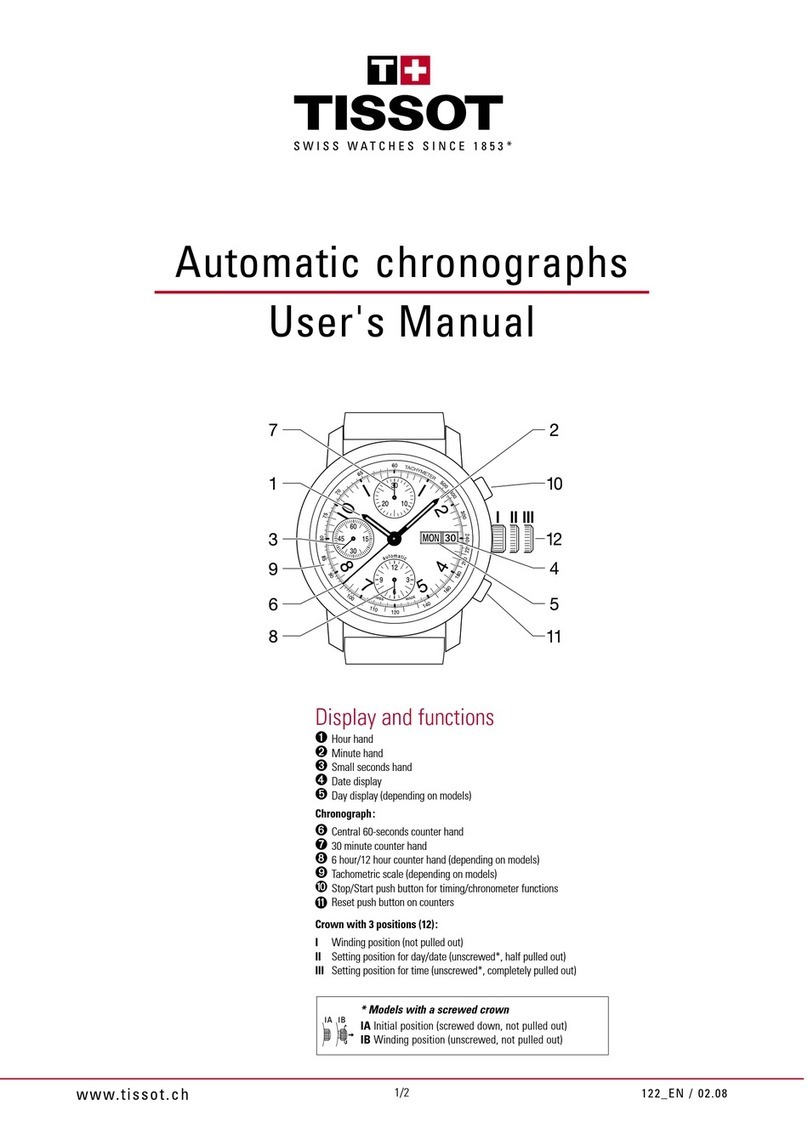www.tissot.ch 133_EN / 08.06
2/2
Congratulations
We would like to congratulate you on having chosen a watch from TISSOT ®,
one of the most highly renowned Swiss brands in the world. With its
distinctive and nostalgic character and constructed with meticulous care from
the finest materials and components, your watch is protected against shock
loads, variations in temperature, water and dust.
Your watch is equipped with an ultra-flat quartz movement delivering
extremely high standards of precision and operation and the dial displays
hours, minutes, seconds and date (with day and month), with a moon phase
display programmed for the next 10 years into the future.
After initial setting, all you need to do is to make adjustments to the settings
whenever the battery needs changing. Initial setting of your wristwatch is
performed in accordance with the moon phase calendar provided at the end
of this User Guide.
To ensure that your watch operates with perfect precision for many years
to come, we advise you to pay very careful attention to the advice provided
hereafter.
Usage / Settings
Models with a screwed crown
To ensure that they remain water-resistant, some models are fitted with a
screwed crown. Before proceeding to setting the time or the time-zone dial,
you must first unscrew the crown into position IB before pulling it out into
position II or III.
Important : After each operation, you must always screw the crown
back down to ensure that your watch remains water-resistant.
Setting the time
Pull the crown out into position III ; the seconds hand (3) stops at this point.
Turn the crown forwards or backwards until the hands display the correct
time. Once the hour hand passes the 12 o'clock position, you can see if it
indicates midnight (the date changes at this point) or midday (the date does
not change).
Advice on how to synchronise your watch
To synchronise the second hand (3) with an official time signal (radio/TV/
Internet), pull the crown out into position III when the second hand is at 12
o'clock. This then stops. Guide the hands into the correct time setting. At the
tone, press the crown back into position I (and tighten it down if you have a
model with a screwed crown).
Setting the day of the week
Pull the crown into position III and move backwards and forwards between
23 : 00 hrs and 01 : 00 hrs (11 p.m. and 1 a.m.).
Note : Due to the fact that this operation alters the date, this then has
to be corrected by pulling the crown out into position II and turning
it.
Setting the date and the month
Pull the crown out into position II and turn it forwards until the correct date
(4) is displayed. During this operation, your watch will continue to function
normally, so you will not need to alter the time.
When the date changes from the 31st to the 1st, the month indicator advances
by one month. Since the display for phases of the moon was programmed
in advance, all you have to do is alter the date on months with less than 31
days.
Setting the phases of the moon
Pull the crown out into position II and turn it forwards until the correct phase
of the moon (7) is displayed.
Note : For precise adjustment purposes, place the moon phase indicator on
the full moon setting. At this point, each jump of the indicator advances the
setting by one whole day.
The moon and its phases
The phases of the moon cycle, from one new moon to the next one, lasts
29 days, 12 hours, 44 minutes and 2.8 seconds. The new moon corresponds
to the first lunar day (fig. 1). The moon is invisible because its dark side is
facing us.
On the 8th day (fig. 2), after completing one quarter turn, a crescent moon
appears with the curve facing to the right, like the belly of a large « D ». This
shows that the moon is waxing at this point.
On the 15th day of the lunar cycle (fig. 3), at the mid-point of its revolution, we
see a fully illuminated circle, indicating the full moon. The moon at this point
is directly opposite the sun.
On the 23rd day of the lunar cycle (fig. 4), at the end of its third quarter and
immediately prior to the last quarter of its cycle, the crescent appears curved
towards the left like a large « D ». This shows that the moon is waning at this
point. A new lunar cycle now commences.
The moon changes continuously between these characteristic positions.
The time which has elapsed between two new moons corresponds to
approximately one month. This is known as a synodic cycle. The orbit of
planet Earth around the sun describes what is known as an elliptical path,
on a defined plane. Let's represent this plane extending to infinity up to the
point where it intersects the sphere of fixed stars. Alongside this circle is a
range of constellations, familiar to most of us as the constellations of the
zodiac: Aries, Taurus, Gemini, Cancer, Leo, Virgo, Libra, Scorpio, Sagittarius,
Capricorn, Aquarius, Pisces. If it were possible to see stars during daylight
hours, we would observe in the course of a calendar year that the Sun, when
viewed from the Earth, passes in front of each of the twelve constellations of
the zodiac from right to left, being in front of a different constellation at each
point in time. The lunar orbit around the Earth shares almost exactly the same
elliptical plane as the Earth describes around the Sun. It follows from this that
the Moon's orbit also causes it to pass in front of this group of constellations.
Due to the regular and repetitive nature of this movement and its phases, the
moon has always served as a means of counting the passage of time. Indeed,
this is why the lunar calendar is still used for timekeeping purposes.
We are thus able to order our lives in terms of the lunar cycle. The rhythm
of natural phenomena also has a profound influence on people, animals and
plant-life.
The new quartz TISSOT ® watch with lunar cycle function is therefore intended
for hunters, mushroom collectors, fishermen, navigators etc., and for the
enlightened amateur interested in following the trends of modern fashion.
Care and maintenance
We would advise you to clean your watch regularly (except for the leather
strap) using a soft cloth and warm soapy water. After immersion in salty water,
rinse it in fresh water and leave it to dry completely.
Do not leave it anywhere where it might be subjected to major variations in
temperature or humidity, in direct sunlight or near strong magnetic fields.
To benefit from the highest standards of service and to ensure your guarantee
remains in force, please always contact an approved TISSOT ® representative
or retailer.
TISSOT ® Quartz watches benefit from the incomparable precision of quartz.
Their power reserve usually enables them to operate for more than 2 years in
continuous use. If you envisage not wearing your watch for several weeks or
months, we would advise you to put it to one side with the crown pulled out
into position II. This cuts the electrical power supply to the motor, thereby
extending battery life considerably.
Replacing the battery
Once the battery has run flat, it must be replaced without delay by an approved
TISSOT ® representative or retailer.
Type : Renata 373 / Service life : about 3 years.
Collection and treatment of end of life quartz watches*
This symbol indicates that this product should not be disposed with
household waste. It has to be returned to a local authorized collection
system. By following this procedure you will contribute to the protec-
tion of the environment and human health. The recycling of the materials will
help to conserve natural resources.
* valid in the EU member states and in any countries with corresponding leg-
islation.

